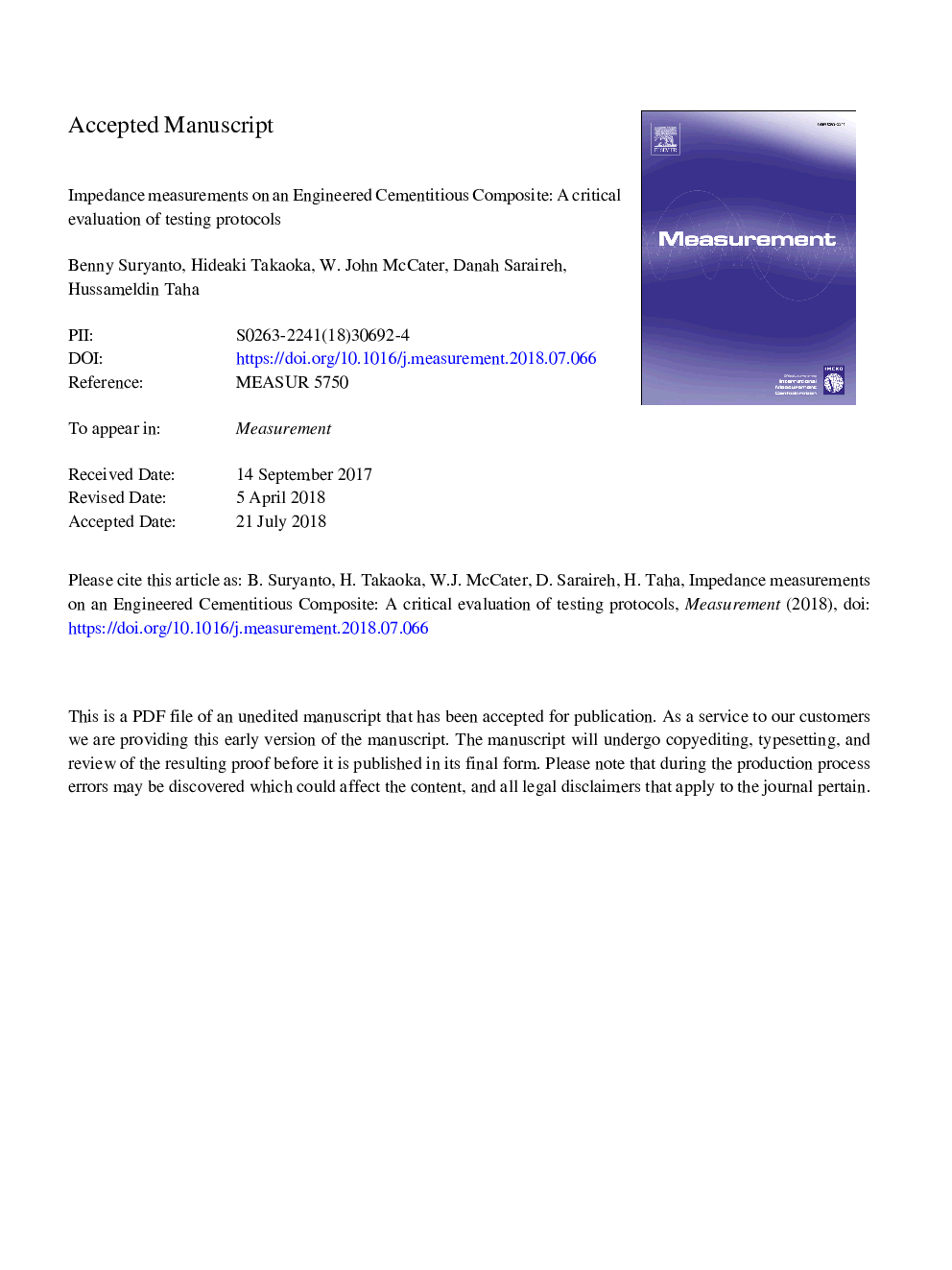| Article ID | Journal | Published Year | Pages | File Type |
|---|---|---|---|---|
| 7120358 | Measurement | 2018 | 50 Pages |
Abstract
An end-to-end (two-point) electrical measurement technique is traditionally employed in evaluating the bulk resistivity of hardened cementitious materials. This testing methodology is critically evaluated by studying the electrical impedance of an engineered cementitious composite (ECC), using cuboidal specimens with four different dimensions viz. 50â¯mm, 70â¯mm, 100â¯mm and 150â¯mm. In the present work, the impedance response (in the form of Nyquist plots) of the ECC specimens was measured over the frequency range 1â¯Hz-10â¯MHz via two external plate-electrodes placed at opposite faces of each specimen. A conductive gel, or saturated, synthetic sponges inserted between the plate/specimen interface were used as the electrode-specimen contacting medium. It is shown that the sponge contacting medium introduced a spurious response which was detectable across the entire frequency range and was particularly evident in specimens with smaller electrode contact area and in specimens with air-voids present on the contact surface. This effect was considerably reduced when either the conductive gel or sponges saturated with highly-conductive liquid was used. It is also shown that the true bulk resistivity of the material, identified from the Nyquist plot, can be evaluated by subtracting the resistivity of the sponge itself from the bulk resistivity of the ECC with the sponges present. Benchmarking studies were also undertaken on specimens with an embedded electrode arrangement.
Keywords
Related Topics
Physical Sciences and Engineering
Engineering
Control and Systems Engineering
Authors
Benny Suryanto, Hideaki Takaoka, W. John McCater, Danah Saraireh, Hussameldin Taha,
